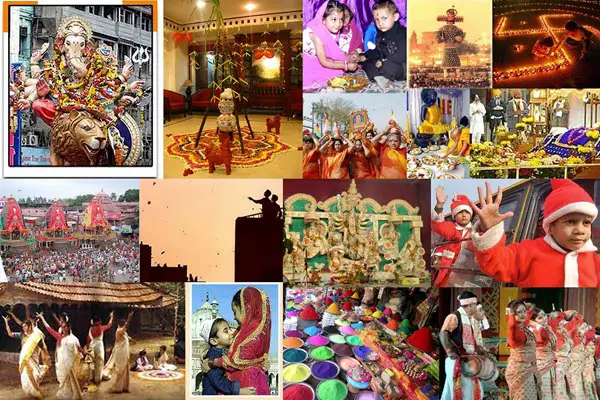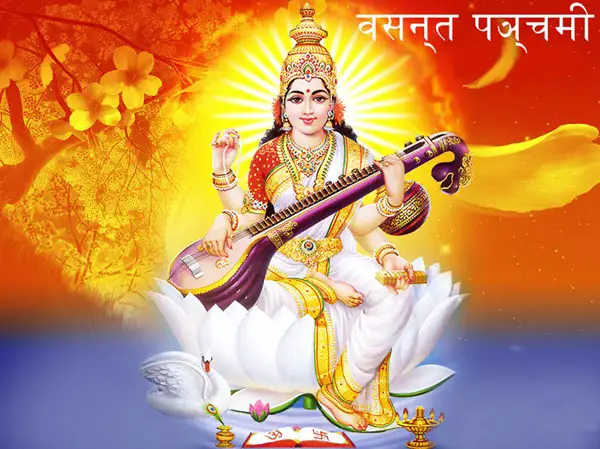Tulsi (basil) is regarded as the holiest and the most sacred plant in the Hindu religion. Moreover, Tulsi is considered a Goddess and is worshiped in almost every Hindu household throughout the country. There is a popular Hindu custom related to the Tulsi plant. Well, it is known as Tulsi Vivah.
Tulsi Vivah is regarded as the ceremonial marriage of the Tulsi Plant with Lord Vishnu or his incarnation Lord Krishna.
The ritual ceremony of the Tulasi Vivah is performed between the periods of Prabodhini Ekadashi and Kartik Poornima.
Usually, most people perform Tulsi Vivah on the eleventh or twelfth lunar day in the Kartik month’s brighter half (Shukla Paksha). So, the Tulasi Vivah day differs from region to region. It is performed in October or November.
The Tulsi Vivah is believed to be the beginning of the Hindu wedding season and the end of the monsoon.
Table of Contents
Tulsi Vivah Date 2025
As you know, Tulsi Vivah is the ceremonial marriage performed between the Tulsi plant (holy basil) and the Hindu God Vishnu or his incarnation (avatar), Shri Krishna.
Tulsi Vivah’s Date is on 2nd November 2025, Sunday
Dwadashi Tithi Begins = 07:31 AM on 02 November 2025
Dwadashi Tithi Ends = 05:07 AM on 03 November 2025
Here, you get to know the story of Tulsi Vivah and the procedure of Tulsi Vivah.

Tulsi Vivah Story (Tulsi Vivah Katha)
Tulsi is sometimes referred to as “Vishnupriya,” the beloved of Lord Vishnu. Hindus regard the Tulsi plant as a Goddess.
The Katha or Legend relating to the Tulsi Vivah is described in the Hindu sacred scripture of Padma Purana.
According to this scripture, the Tulsi plant was a woman named Vrinda. She was married to a demon king by the name of Jalandhar.
Jalandhar was a terror to all the world. But, on the other hand, Vrinda was a big devotee of Lord Vishnu.
Due to Vrinda’s piousness and devotion, Jalandhar had become invincible and had secured Godlike powers.
Nobody was able to defeat Jalandhar, not even Lord Shiva.
All the Devas were worried and prayed to Lord Vishnu to find a solution. Finally, Lord Vishnu told the Devas that Jalandhar could not be defeated unless the chastity of Vrinda was challenged.
Lord Vishnu vowed to help the Devas. So, Vishnu disguised himself as Jalandhar and violated Vrinda. It destroyed the purity of Vrinda.
The powers of Jalandhar vanished, and Lord Shiva was able to kill the demon in the battle.
When Vrinda became aware of the truth, she cursed Lord Vishnu to be transformed into a black stone (Saaligram) and told him that he would be separated from his wife, Lakshmi.
It was later fulfilled when Shri Vishnu transformed into the black Saaligram stone.
In Rama Avatar, he was separated from his wife, Sita, when Ravana took her to Lanka.
Vrinda then decided to burn herself along with her husband’s funeral fire. Lord Vishnu then blessed Vrinda, transformed her into a Tulsi plant, and married her as Saaligram.
The marriage was held on Prabodhini Ekadashi. So, it is the legend or Katha relating to the Tulsi Vivah.
Since then, the tradition of Tulasi Vivah has become popular with the Hindus. As a result, Tulsi Vivah became to be practiced by the devotees.
Tulsi Vivah Rituals
The ceremony of Tulsi Vivah is usually performed at homes and is also held at temples.
The Tulsi Vivah, or the Tulsi marriage ceremony with Bhagwan Vishnu, is much like the Hindu traditional wedding.
People observe a fast on Tulsi Vivah day. In the evening, the ceremony of Tulsi Vivah is held.
A mandap (marriage booth) is constructed, and the Tulsi plant is placed in it.
Usually, the Tulsi plant is planted in a brick plaster-shaped structure known as “Tulsi Vrindavana.”
It is said that Vrinda’s soul resides in Tulsi at night and leaves in the morning.
The plant is decorated with a sari and ornaments of various types, such as necklaces and earrings.
People also attach a paper human face to the Tulsi plant with “bindi” and nose-ring.
The groom is usually a Saaligram stone or brass image of Vishnu. The image is decorated with a “dhoti.”
Both Tulsi and Vishnu are bathed and decorated with flowers before the beginning of the marriage ceremony.

The marriage is performed with the Mangal Ashtaka mantras. Once the recitation is completed, it marks the completion of the wedding.
Attendees shower mixed rice with vermillion on Tulsi and Vishnu. They also clap, which signifies approval of the wedding.
Tulsi is offered Mangal Sutra, while Vishnu is offered sandalwood paste.
The Prasad, which consists of sugarcane, fruits, coconut chips, and groundnut, is distributed among the devotees. Food and sweets are also prepared.
So, we see that Tulsi Vivah is an important religious ceremony in the Hindu religion. It is performed with much devotion and enthusiasm throughout India.
Tulsi Vivah Vidhi – How to do Tulsi Vivah at your home?
Tulsi Vivah ceremony is usually performed on Prabodhini Ekadashi Tithi, which comes in the Hindu month of Kartik.
It is considered best to perform Tulasi Vivah on Ekadashi Tithi. This falls in October or November.
The Vivah Vidhi is extremely easy to follow. The Tulsi Vivah ceremony takes place in the evening.
According to Hindu religious beliefs, one needs to observe a fast on the day of Tulsi Vivah.
One should wake up early in the morning, take a holy bath, and clean their home.
To begin the Vivah Ceremony, you should place an idol or picture of Lord Vishnu along with the Tulsi plant.
The Tulsi plant pot should be placed in the center of your house and given a holy bath.
You should decorate the Tulsi plant as well as Lord Vishnu’s idol with yellow clothes. You can use objects like turmeric, vermilion, sacred thread, ornaments, and flowers.
One should also construct a marriage booth (Mandap) and place the Tulsi plant near the structure.
You should offer the Tulsi plant red-colored bangles, bindi, sari, and jewelry. One should offer the red-colored “Chunari” to the Tulsi plant.
You should also offer vermilion to the Tulsi plant. You have to place a “Nariyal” before the Tulsi plant.
Lastly, offer “Dakshina” to the Tulsi Plant.
Lord Vishnu or Shaligram Shila’s idol should be decorated with male attire and placed adjacent to the Tulsi plant.
Now, you can begin the marriage ceremony. Usually, the ladies of the household perform the marriage ceremony.
You should take Shaligram Bhagwan (a form of Lord Vishnu), preferably in a “Singhasan,” and do “Parikrama” (circling) of the Tulsi plant. It should be done seven times.
You can chant Lord Vishnu and Tulsi Mantras.

A cotton thread is tied around the statue of Lord Vishnu and the Tulsi plant as a mark of the wedding lock.
After this, you should do Aarti of Tulsi and Lord Vishnu in front of the Mandap, where you have placed the Tulsi plant and Shaligram.
You can recite the following mantra:
“Aum Tulasyai Namah”
After the marriage ceremony, the Prasadam is distributed among all the attendees.
Usually, devotees keep a vigil on the night of the ceremony and sing the glories of Lord Vishnu and Tulsi.
The proceedings are concluded in the morning.
On the Dwadashi Tithi (the day following Ekadashi), you should again perform puja for the Tulsi plant and Shaligram.
You can offer Diya flowers to the Tulsi and Shaligram Bhagwan. You can sing Tulsi and Lord Vishnu Aarti.
After this, you can break your fast. Consuming Tulsi leaves (that have fallen on their own) is considered beneficial after having food on breaking the fast.
It is also believed that if one consumes Sugarcane, Awala, and Baer to break the fast, one can get rid of all the evil doings in the past.
Performing the Tulsi Vivah is a very hopeful thing for childless parents.
Note: It is not easy to get Shaligram Moorti. However, you can use Lord Vishnu’s idol or picture in place of Shaligram for performing Tulasi Vivah. You can even take Purohits’ (Pandit) help for elaborate Tulsi Vivah at home.




